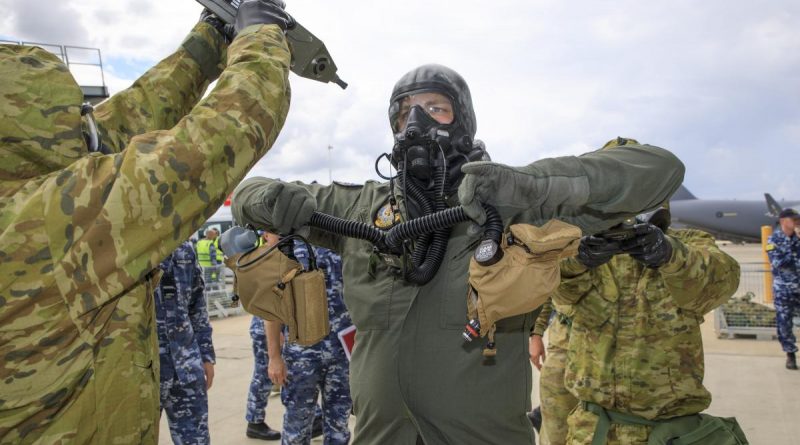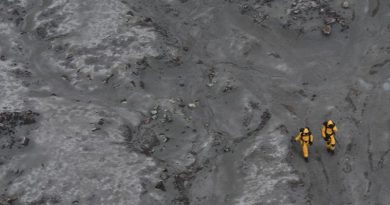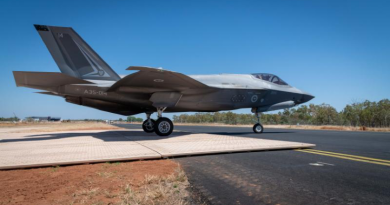Exercise prepares aviators for toxic threats

Air Force personnel at RAAF Base Amberley have tested their preparedness for the most dangerous warfighting environments: chemical, biological, radiological and nuclear threats.
CAPTION: Aviators from No 381 and No. 1 Security Forces Squadrons guide a pilot with protective clothing through the decontamination processes during Exercise Toxic Safari at RAAF Base Amberley. Story by Flight Lieutenant Robert Hodgson. Photo by Corporal Brett Sherriff.
Exercise Toxic Safari 22 was a collective training activity focussing on operations in a contaminated chemical, biological, radiological and nuclear defence (CBRND) environment.
Participants came from Combat Support Group, Air Mobility Group and Army Headquarters.
The exercise enabled the personnel to develop the necessary skills, knowledge and attitudes to enhance their overall capability to ‘survive to manoeuvre’ in a CBRND environment.
The training scenario focussed on the processing of chemically contaminated personnel at an exchange airfield, with Combat Support Group personnel conducting decontamination operations designed to enable and sustain the forward movement of Australian Defence Force personnel.
Flight Sergeant Anthony Hartley, from Headquarters Combat Support Group, explained the decontamination process.
“A critical factor in CBRND is the decontamination of personnel, equipment, and the environment,” Flight Sergeant Hartley said.
“A method of achieving this is with a phased step-by-step process of removing contaminated equipment and effects utilising a personnel decontamination station (PDS).”
“The purpose of the PDS is to remove contamination from personnel as soon as possible to avoid spreading the contamination agent.
“When the person reaches the end of the PDS, they should be free of any contamination. Every effort to minimise the spread of further contamination must be taken throughout the PDS.”
A key component of the exercise was about personnel becoming familiar with protective equipment procured under project LAND 2110.
The equipment is designed to enhance future capability through detection and sensing of threats and protection of personnel.
LAND 2110 aims to deliver a modern, flexible, technically robust and integrated CBRND capability enabling the joint force to operate in an environment that is, or may become, contaminated.
Exercise Toxic Safari required a large number of role-players to assist in the activity.
Pilot Officer Benjamin Sherry, from No. 6 Squadron, played one of those roles.
“It’s been great to see another side to Air Force that I wouldn’t normally see,” Pilot Officer Sherry said.
“Being a role-player has also allowed me to work together with members from other units which has been really interesting.”
.
.

.
.





